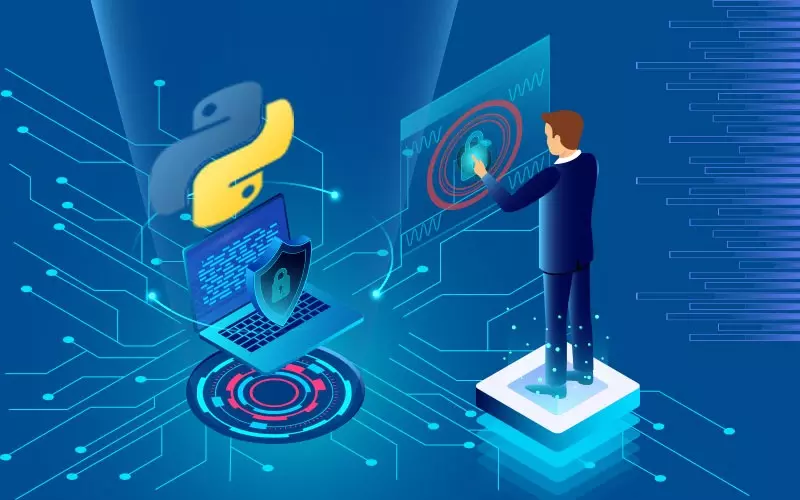Python Robotics: Innovations and Developments for 2023
Python has emerged as a powerful programming language, not only in web development and data analysis but also in the field of robotics. With its simplicity and versatility, Python has become a popular choice for building intelligent robots and automation systems. In this article, we will explore the innovations and developments in Python robotics for the year 2023.
Introduction to Python Robotics
Python is a high-level programming language known for its simplicity, readability, and extensive libraries. In recent years, Python has gained significant traction in the field of robotics. It provides a user-friendly environment for developing robot control systems, perception algorithms, and AI integration.
Advantages of Using Python in Robotics
Python offers several advantages for robotics development:
Ease of Use
Python’s clear and concise syntax makes it easy to understand and write code, even for beginners.
Large Community
Python has a vast and active community of developers who contribute to open-source libraries, frameworks, and tools for robotics.
Extensive Libraries
Python provides numerous libraries such as NumPy, SciPy, and OpenCV, which simplify complex tasks like mathematical computations, scientific simulations, and computer vision.
Interoperability
Python can seamlessly integrate with other programming languages, making it suitable for building heterogeneous robotic systems.
Rapid Prototyping
Python’s versatility and ease of use enable quick prototyping and experimentation, accelerating the development cycle.
Python Libraries for Robotics
Python offers a wide range of libraries specifically designed for robotics, including:
PyRobot
PyRobot is an open-source Python library developed by Facebook AI Research (FAIR). It provides a high-level interface for controlling various robot platforms and simplifies common robotics tasks.
ROSPy
ROSPy is the Python client library for the Robot Operating System (ROS), a popular middleware for robotics. It allows communication between different robotic components and facilitates the development of distributed robotic systems.
Pygame
Pygame is a Python library that provides functionality for building interactive games and simulations. It can be leveraged in robotics for creating virtual environments, testing algorithms, and training AI models.
Pypot
Pypot is a Python library for creating robot controllers. It offers tools for defining robot kinematics, implementing control algorithms, and visualizing robot movements.
PySerial
PySerial is a Python library for serial communication, which is crucial for connecting robots with external devices and sensors.
Robot Operating System (ROS) and Python
ROS is a widely used middleware in robotics that provides a framework for building modular and distributed robotic systems. Python plays a significant role in ROS development, as it is one of the officially supported languages. With ROS and Python, developers can leverage a vast ecosystem of packages, tools, and libraries for building complex robot applications.
Python Frameworks for Robot Control
Several Python frameworks simplify the development of robot control systems. Some notable frameworks include:
PyTorch
PyTorch is a popular deep learning framework that enables the training and deployment of neural networks in robotics applications. It offers a seamless integration with Python and provides extensive support for GPU acceleration.
TensorFlow
TensorFlow is another widely used framework for machine learning and AI. It allows developers to build and deploy deep learning models for robotic perception, planning, and control.
Gazebo
Gazebo is a powerful robotics simulator that supports Python scripting. It provides an environment for testing algorithms, simulating robot behaviors, and evaluating robot performance.
Machine Learning and Artificial Intelligence in Robotics
The integration of machine learning and artificial intelligence techniques has revolutionized the field of robotics. Python, with its rich ecosystem of ML libraries, has become instrumental in developing intelligent robots. Machine learning algorithms enable robots to perceive and understand their environment, make informed decisions, and adapt to dynamic situations.
Computer Vision and Python Robotics
Computer vision is a key component in robotics, enabling robots to interpret and analyze visual data. Python offers powerful computer vision libraries, such as OpenCV, which facilitate tasks like object detection, recognition, tracking, and image processing. These libraries enhance a robot’s perception capabilities, enabling it to interact with the surrounding world effectively.
Simulations and Testing in Python Robotics
Simulation plays a crucial role in robotics development, allowing for safe and cost-effective testing of algorithms and control strategies. Python provides several simulation environments, such as Gazebo, Webots, and V-REP, which offer realistic physics simulations and support Python scripting. These simulations enable developers to evaluate and refine their algorithms before deploying them on real robots.
Real-World Applications of Python Robotics
Python-powered robotics has found applications in various domains, including:
Industrial Automation
Python-based robotics solutions are widely used in industries for tasks like assembly, pick-and-place operations, and quality control.
Agriculture
Python robotics is transforming the agricultural sector by automating tasks such as crop monitoring, harvesting, and precision farming.
Healthcare
Python-powered robots are being utilized in healthcare settings for tasks like surgery assistance, patient monitoring, and rehabilitation.
Logistics and Warehousing
Python robotics enables efficient warehouse management through autonomous robots for inventory management, sorting, and delivery.
Education and Research
Python’s simplicity and extensive libraries make it a popular choice for educational institutions and researchers in the field of robotics.
Challenges and Future Directions
While Python has significantly contributed to the field of robotics, there are still challenges to overcome. Some key areas for improvement and future developments include:
Real-Time Performance
Real-time control and processing remain a challenge for Python due to its interpreted nature. Efforts are being made to optimize Python for real-time robotics applications.
Safety and Security
As robots become more autonomous and connected, ensuring their safety and security from cyber threats is of paramount importance.
Hardware Integration
Python needs better support for hardware integration, including standardized interfaces for connecting and controlling different sensors, actuators, and robot platforms.
Ethical and Legal Considerations
With the increasing use of robotics, ethical and legal frameworks need to be established to address issues such as privacy, liability, and societal impact.
Conclusion
Python has emerged as a versatile and powerful language for robotics, enabling developers to build intelligent and autonomous systems. With its extensive libraries, ease of use, and thriving community, Python continues to drive innovations in the field of robotics. As we move into 2023, we can expect further advancements and exciting developments in Python-powered robotics.
FAQs
- How can I get started with Python robotics?
To get started with Python robotics, you can explore online tutorials, documentation, and educational resources. There are also robotics-focused Python courses and workshops available that can help you gain practical experience.
- Can I use Python for controlling real robots?
Yes, Python can be used for controlling real robots. However, it is essential to consider real-time performance requirements and hardware compatibility when using Python for real-world robotic applications.
- Are there any limitations to using Python in robotics?
While Python offers numerous advantages, it does have some limitations. These include slower execution speed compared to lower-level languages like C++ and the need for additional measures for real-time control.
- Can I combine Python with other programming languages in robotics?
Yes, Python can be combined with other programming languages in robotics. It provides interoperability and can interface with lower-level languages for performance-critical tasks or hardware-specific operations.
- What are some popular Python libraries for robotics?
Some popular Python libraries for robotics include PyRobot, ROSPy, Pygame, Pypot, and PySerial. These libraries provide various functionalities for robot control, simulation, communication, and perception.




